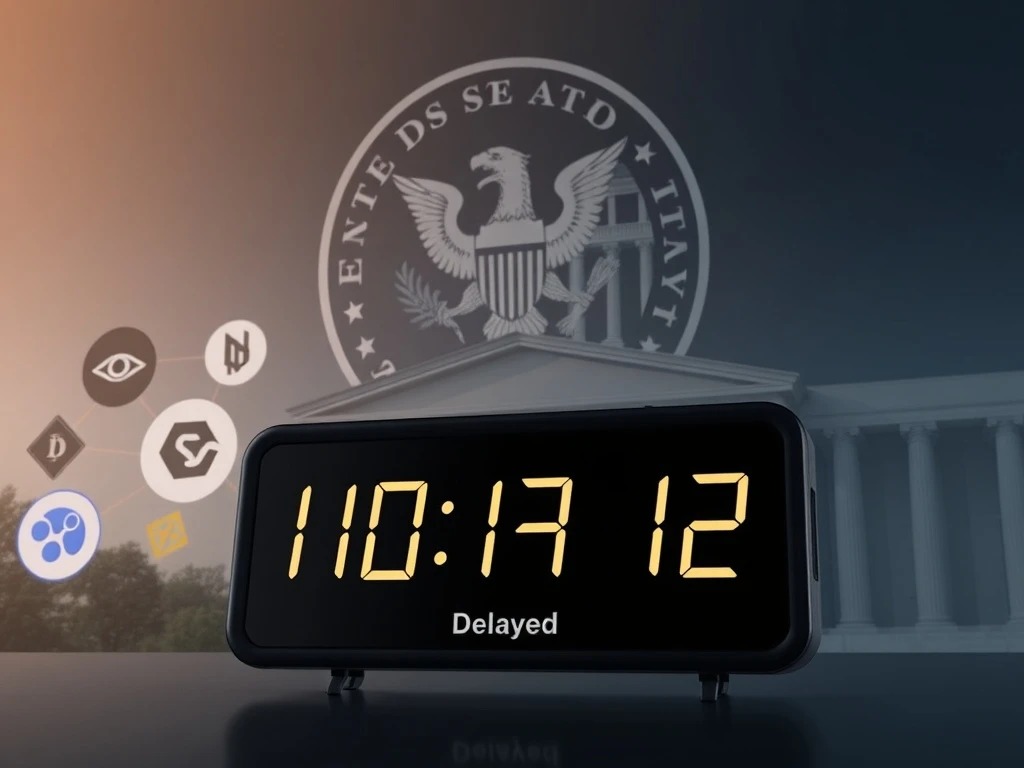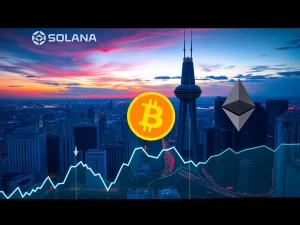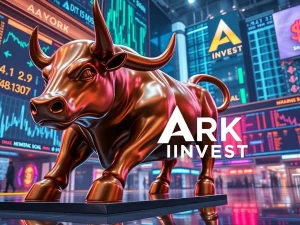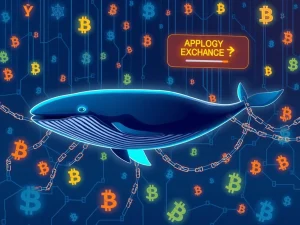SEC Crypto ETF: Critical Delays Bring Uncertainty for Dogecoin and Altcoin Futures

The crypto market faces another period of anticipation. Recently, the U.S. Securities and Exchange Commission (SEC) announced further delays on key applications. This includes the Bitwise Dogecoin ETF and the Grayscale Hedera ETF. These decisions now extend into November. This move highlights the ongoing regulatory hurdles for digital asset investment products. It also leaves many investors wondering about the future of **SEC crypto ETF** approvals.
Navigating the Latest SEC Crypto ETF Delays
The U.S. Securities and Exchange Commission (SEC) continues its cautious approach to cryptocurrency investment vehicles. On Tuesday, the agency officially postponed its decisions on two prominent applications. These are the Bitwise Dogecoin ETF and the Grayscale Hedera ETF. Both applications will now remain under review until November 12. This news came just 15 minutes ago, reported by Nate Kostar. It signifies a continued pattern of regulatory deliberation.
The Bitwise Dogecoin ETF proposal, filed by NYSE Arca, began its statutory review period in March. Specifically, it was published in the Federal Register on March 17. The SEC now needs more time to assess this product. Similarly, Grayscale’s application to list a Hedera ETF faces the same extended timeline. This consistent deferral strategy by the SEC creates a backlog. It also underscores the complex nature of integrating digital assets into traditional financial frameworks.
Many investors closely watch these developments. Each delay adds to market uncertainty. However, it also provides the SEC with more time. They can thoroughly evaluate the market structure, custody solutions, and investor protection measures. This careful scrutiny is standard for novel financial products. Therefore, the market expects these extensions. The regulatory body aims to ensure market integrity. They also protect investors from potential risks.
Grayscale’s Strategy: Paving the Way for Altcoin ETFs
Grayscale Investments stands at the forefront of the battle for crypto ETF approvals. The firm gained a significant victory in 2024. They successfully converted their Grayscale Bitcoin Trust (GBTC) into the first U.S. spot Bitcoin ETF. This landmark achievement followed a protracted legal dispute with the SEC. It established a crucial precedent. Grayscale now seeks to replicate this success with other digital assets. They aim to transform existing trusts into exchange-traded funds.
Currently, Grayscale has updated filings for its long-standing Litecoin and Bitcoin Cash trusts. The company wants to convert these from trusts into ETFs. Moving these trusts to a national exchange offers several benefits. Firstly, it allows for daily share creations and redemptions. This mechanism helps keep ETF prices closely aligned with their net asset value (NAV). Secondly, it significantly reduces the steep premiums and discounts often seen in over-the-counter (OTC) trading. This improved liquidity and price accuracy benefit investors. Ultimately, it makes these assets more accessible and attractive to a broader audience. Grayscale’s persistent efforts highlight the growing demand for regulated crypto investment products beyond Bitcoin.
The firm’s strategic approach leverages its prior legal triumph. This creates a pathway for other **Altcoin ETFs**. Grayscale believes that if Bitcoin can have a spot ETF, other major cryptocurrencies should too. Their ongoing applications for the **Grayscale Hedera ETF** and conversions for Litecoin and Bitcoin Cash exemplify this commitment. These efforts are pivotal. They could unlock significant institutional capital for these digital assets. Such developments would also foster greater market maturity.
The Expanding Landscape of Altcoin ETFs
The first half of 2025 (likely meant 2024, given the context) saw a surge in altcoin ETF applications. This has created a substantial backlog for the SEC. As of July 31, at least 31 altcoin spot-ETF applications were filed. These proposals cover a wide range of digital assets. They include XRP, Dogecoin, Solana, Litecoin, Avalanche, and BNB. This growing interest reflects increasing institutional demand for diversified crypto exposure. Furthermore, as of August 29, at least 92 crypto-related ETF products awaited SEC decisions. This number truly underscores the immense pressure on the regulatory body.
Institutional interest shows particular strength in certain altcoins. Solana (SOL) leads with eight applications in line. XRP follows closely with seven applications. This highlights the perceived potential and growing ecosystems of these specific cryptocurrencies. The sheer volume of these applications demonstrates a significant shift. Traditional finance is increasingly looking to integrate digital assets. The market anticipates the approval of a **Dogecoin ETF**. This would validate a major meme coin, potentially opening doors for others. Similarly, approvals for other prominent altcoins could fundamentally change the investment landscape.
The proliferation of these applications is a clear signal. The crypto market is maturing beyond just Bitcoin and Ethereum. Investors are seeking regulated avenues for broader portfolio diversification. These **Crypto ETF decisions** are not just about individual coins. They represent a larger trend. They signify the mainstreaming of digital assets. Each application contributes to the ongoing dialogue between innovators and regulators. Ultimately, this shapes the future of financial products.
Understanding the SEC’s Deliberate Pace on Crypto ETF Decisions
The SEC often uses the full length of its review periods. They frequently extend deadlines. This happens rather than issuing early approvals or rejections. This cautious approach stems from their mandate. The SEC protects investors and maintains fair, orderly, and efficient markets. Crypto assets present unique challenges. These include market volatility, custody concerns, and potential for manipulation. Therefore, the agency takes its time.
In August, the SEC postponed multiple crypto ETF filings. These included NYSE Arca’s Truth Social Bitcoin and Ethereum ETF to October 8. The 21Shares and Bitwise Solana ETFs also moved to October 16. Furthermore, the 21Shares Core XRP Trust saw a new deadline of October 19. On August 25, the agency extended its review of Cboe BZX’s proposal for the WisdomTree XRP Fund. Its new deadline is October 24. The same day, the SEC delayed its decision on the Canary PENGU ETF to October 12. These consistent delays highlight the agency’s meticulous process. They aim to address every potential risk. This ensures robust investor protections are in place. The SEC’s measured pace is a recurring theme in the evolution of crypto regulation.
The agency must also consider the unique characteristics of each altcoin. For example, the market structure of Dogecoin differs significantly from Hedera. These differences necessitate tailored evaluations. The SEC evaluates underlying market liquidity. They also assess surveillance sharing agreements. These are crucial for preventing fraud and manipulation. The sheer number of applications also contributes to the extended timelines. Each application requires careful, individual assessment. This process ensures regulatory compliance and market integrity for all proposed products.
What Do These Crypto ETF Decisions Mean for the Market?
The ongoing delays for **SEC crypto ETF** applications create both challenges and opportunities. For investors, the immediate impact is continued uncertainty. This can lead to price volatility for affected altcoins. For instance, the approval of a **Dogecoin ETF** could spark a significant rally. However, persistent delays might temper investor enthusiasm. The market often reacts strongly to regulatory news. Therefore, these postponements influence short-term trading sentiment. Many believe that ETF approvals would bring substantial new capital into the market.
On the other hand, these delays allow for further market maturation. They give issuers more time to refine their proposals. They also encourage the development of more robust infrastructure. This includes improved custody solutions and clearer regulatory guidelines. The SEC’s cautious approach, while frustrating for some, aims to build a more stable foundation. This could benefit the crypto ecosystem in the long run. Eventually, approved altcoin ETFs could provide mainstream access. This would open doors for traditional financial advisors and institutions. They could then allocate client funds to digital assets with greater confidence.
The potential for significant institutional inflows remains a powerful driver. Many anticipate that an approved **Grayscale Hedera ETF** or other altcoin products would legitimize these assets further. This would enhance their credibility. It would also attract a new wave of investment. The long-term outlook for altcoin adoption remains positive. However, the path to full integration into traditional finance is clearly complex. It requires persistent effort from both crypto firms and regulators. The upcoming November deadlines will be closely watched. They may offer clearer signals about the future trajectory of these innovative financial products.
The Path Forward: Anticipating Future Crypto ETF Decisions
The crypto community eagerly awaits the SEC’s decisions in November. These upcoming deadlines for the Bitwise Dogecoin ETF and Grayscale Hedera ETF are significant. They will provide further insights into the agency’s evolving stance on digital asset investment products. The SEC’s pattern of extensions suggests a thorough, albeit slow, evaluation process. This is not unexpected for novel financial instruments. Each delay allows for deeper scrutiny of market risks and investor protections. It also reflects the complex legal and technical considerations involved.
Looking ahead, the sheer volume of **Altcoin ETFs** applications underscores a powerful market trend. Institutional demand for diversified crypto exposure is undeniable. While the SEC maintains a cautious posture, the industry continues to innovate. Firms like Grayscale are actively pushing for conversions. They leverage legal precedents to open new avenues for investors. This persistent effort will eventually yield more regulated products. These will likely bring greater liquidity and mainstream adoption to various altcoins. The ongoing dialogue between regulators and innovators is crucial. It will ultimately shape the future of crypto in traditional finance. The journey is long, but the destination—a more accessible and regulated crypto market—remains a compelling vision for many.










